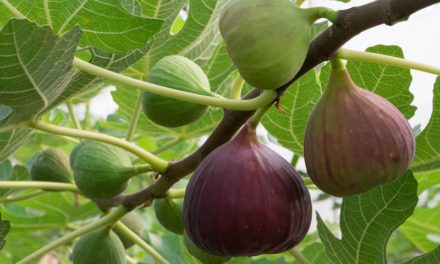 It happens every year – August, that is: the hottest and muggiest of months and the least enjoyable time to be working outdoors. Routine garden maintenance is about all one can keep up with while it is so uncomfortable. A lot of summer flowers are looking pretty ragged, but others save the best for last.
It happens every year – August, that is: the hottest and muggiest of months and the least enjoyable time to be working outdoors. Routine garden maintenance is about all one can keep up with while it is so uncomfortable. A lot of summer flowers are looking pretty ragged, but others save the best for last.
The fragrant ginger lilies enjoy the steamy late summer weather. The white Hedychium coronarium is still my favorite although they come in many colors now. I have a very pretty pale yellow one, ‘Gold Flame’ that is starting to grow on me. The purple Mexican Sage, Salvia Leucantha; looks well paired with the swamp sunflower, Helianthus augustifolius. The blowsy Confederate Rose, Hibiscus mutabilis, will peak soon with large double flowers that open white, turn pink and later they turn a dark rose as the day ends. Then there is the magnificent blue ginger, Dichorisandra thrysiflora that begins blooming this time of year. It is not really in the ginger family but is commonly called such because of the shape of the leaves and flowers.
If they were dead-headed and fertilized a number of early bloomers will get their second wind and start to perk up again. Roses, like people, are just waiting for those cooler nights. Be sure to keep them fed and watered. The lavender blue flowers on the dwarf Buddleia ‘Blue Chip’ attract all sorts of butterflies and bees and it is one cultivar that seems well suited to this climate. Mine has thrived for several years; this was not the case with the larger varieties of butterfly bushes. Coleus can be real stars of the garden now, at this stage they are huge and their many colored leaves make a good background to emphasize the colors of other flowers.
I just noticed the first flower spike on my red Firespike, Odontonema stricta, this hardy fall blooming perennial will continue to send up large panicles of brilliant red tubular flowers until frost and it is a powerful magnet for hummingbirds. Last year I planted a purple Firespike but unlike its red cousin, it flowered from February until July. Another hummingbird favorite is the Bottlebrush, Callistemon; it too is getting ready to show off again. My bougainvilleas are setting many buds right now, getting ready for their fall show.
In the pond the water lilies continue to flower but the lotuses have given up for the season. Sadly, they did not do well this summer for me and I have heard from others that they had the same problem. Could it have been the overly warm winter or the unusually early summer, we’ll never know.
Among the things you need to keep up with during August are:
Deadheading – if the plant goes to seed it tends to stop blooming so snip off all the spent flowers, this will extend the blooming season.
Check the mulch – hot, humid weather causes mulch to decompose quickly so add enough fresh material to bring it up to about 3”. Don’t forget to keep the root flare around trees mulch free.
Pinch the mums – keep pinching the growing tips on your garden mums to produce a fuller plant with more flowers in the fall.
Check the camellias – reduce the number of buds to produce large individual flowers. Always keep an eye out for any scale diseases on your camellias. Clemson has a fact sheet on dealing with camellia problems. http://www.clemson.edu/extension/hgic/pests/plant_pests/shrubs/hgic2053.html
Summer annuals – if they have gotten scraggly it is time to pull them up and replace them with fresh plants for the fall. Do not compost any diseased plants but bag them and dispose of them with your trash.
Vegetables – like the annuals, if your plants are leggy, diseased and hungry looking it is time to pull them up and replace with a fall crop. Be sure to have a soil test done to determine if your soil is deficient in any of the nutrients. Vegetables are heavy feeders and can deplete soils quickly of necessary elements. Also remember to never plant the same vegetables in the same spot for 3 years. This prevents the spread of diseases.
Water – plants, like people, lose a lot of water during the extreme heat; keep an eye out for any that might need an extra drink.
Seeds – this is a good time to start seeds of herbs like parsley; they will be ready to plant out in early fall. Seeds need evenly moist growing mediums, which is hard to maintain outdoors during the heat so start them indoors.
Last, but far from least, is to have a hurricane preparation plan for the garden. Make a list now of those containers and garden ornaments that need to be stowed should we have a big blow come this way. Then, sit back, relax, and think like the honeybees do; they conserve their energy by doing most of their outdoor work early in the day before the sun gets too high. We too can conserve and survive that way.







